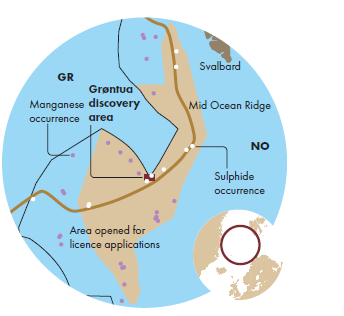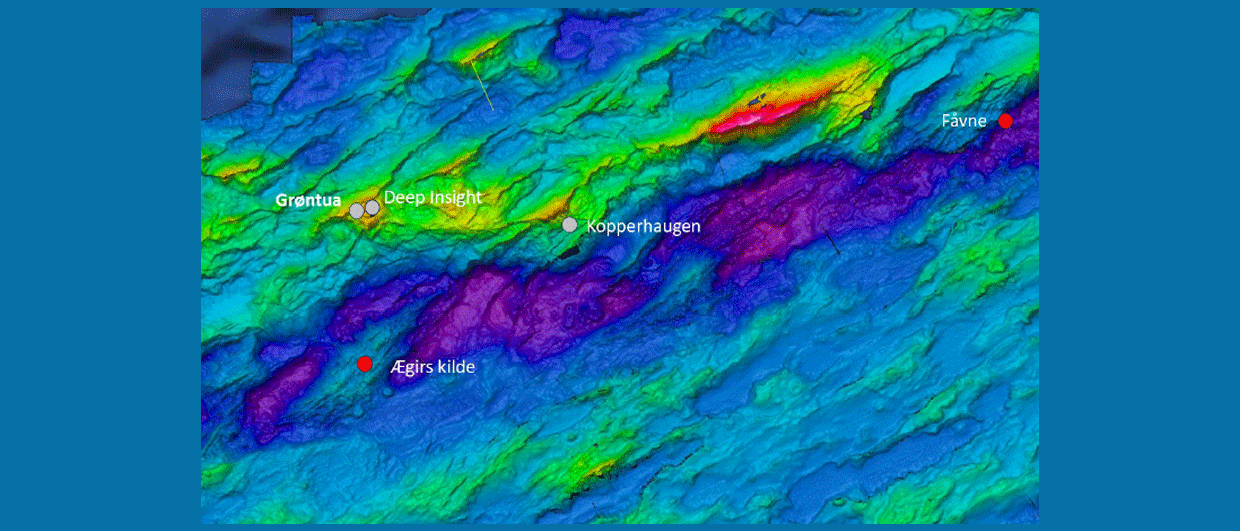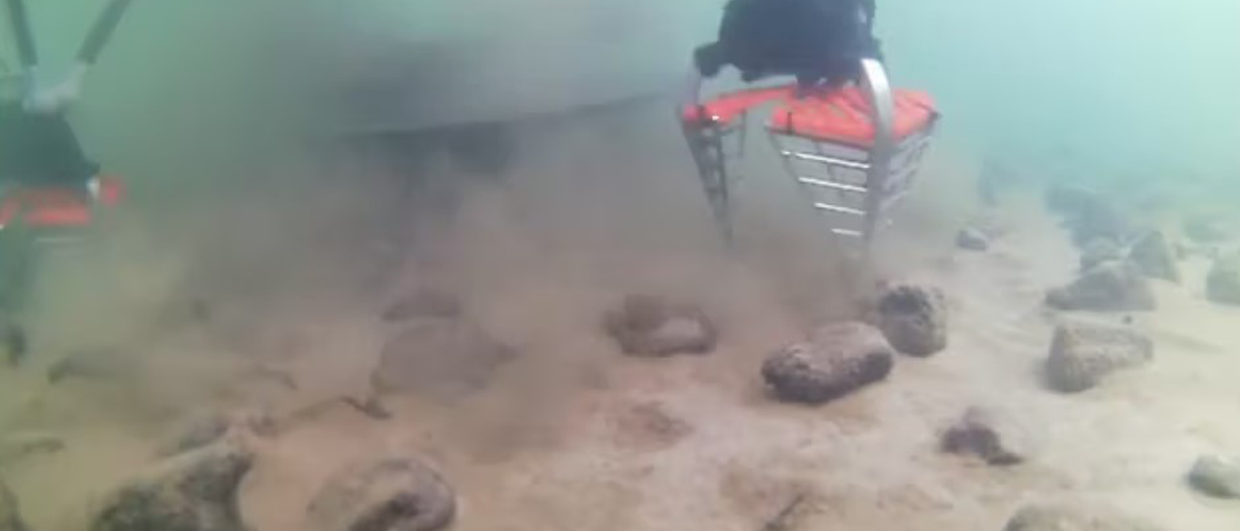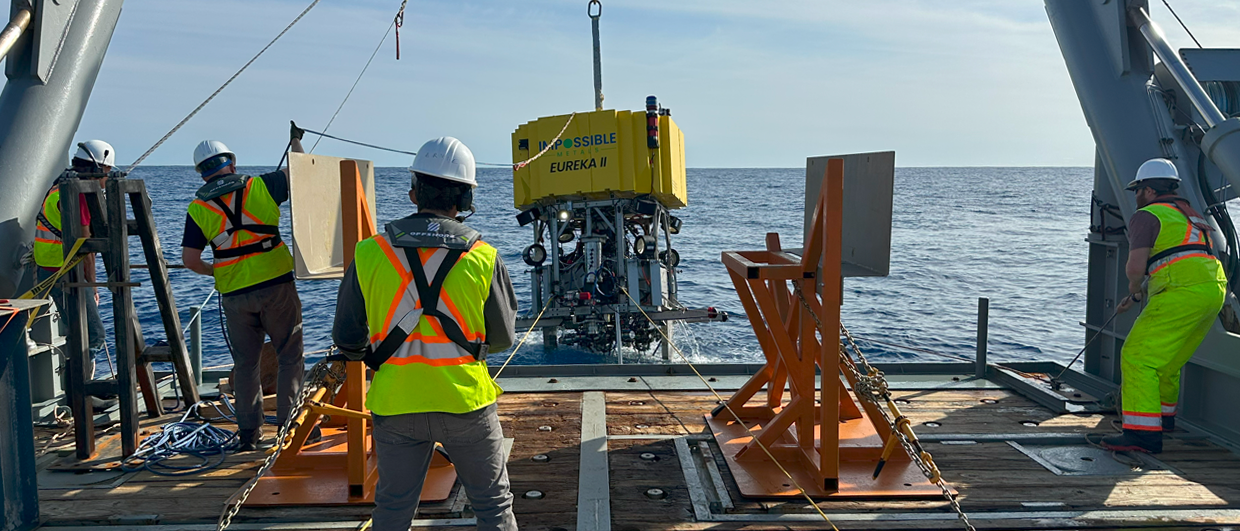Grøntua is the name of the new sulphide deposit that was found during a trip under the auspices of the Center for Deep Sea Research at the University of Bergen (UiB) this summer.

The voyage, which took place in the Norwegian Sea and the Greenland Sea from 24 June to 12 July, aimed to increase knowledge of the deep sea, where both environmental and geological data were collected. It is the Norwegian Offshore Directorate (NOD) that reported the discovery.
Grøntua is located at a depth of 1,175 m on the Mohns ridge, has a diameter of 150 m and extends 60 m above the seabed. The deposit has not been drilled, but seven samples of the deposit were collected using the grab arm of UiB’s remotely operated underwater vehicle (ROV) Ægir 6000. The samples have not yet been analysed, but the NOD writes that the presence of the mineral atacamite indicates that the deposit may have a high content of copper.
The inactive sulphide deposit was found on a hill where the EMINENT research project discovered the Deep Insight deposit last year. Deep Insight was discovered by chance when the partners in the research project were testing drilling equipment. Grøntua is located approximately 1 km west of Deep Insight. The voyage in 2024 was carried out with the research ship G.O. Sars.
Far more to find
The number of known active and inactive hydrothermal deposits increases from year to year. At the time of writing, ten active deposits and four inactive deposits have been found.
From a resource perspective, it is the inactive, extinct fields that are of interest. According to the Seabed Minerals Act, active deposits are protected because they create the basis for unique ecosystems. It is also more technically demanding to operate in the extreme temperatures that occur where boiling water flows out from the seabed.
The Center for Deep Sea Research, led by Rolf Birger Pedersen, has been central to the exploration of the deep sea for a number of years and is behind many of the discoveries of active and inactive sulphide deposits that have been made so far.
There is, nevertheless, good reason to believe that new discoveries will continue to be made in the years to come. In the first half of 2025, the Ministry of Energy will award the first licences so that commercial players can begin exploration activities. Mapping under state auspices will continue in parallel with this.
It is primarily the Mohns Ridge that is prospective with regard to sulphide deposits due to their location along the mid-ocean ridge. The NOD has estimated that – under certain conditions and assumptions – around 1,000 deposits can be found.





